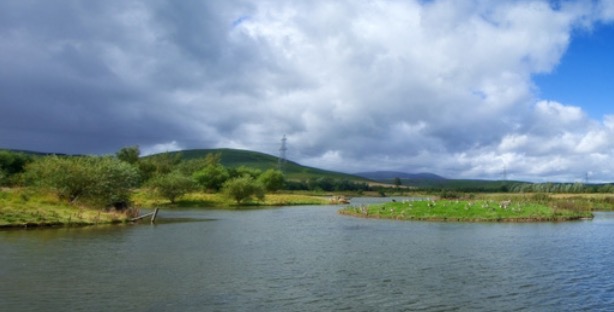Branton Nature Conservation Area
The extraction of sand and gravel started in 1996 and has resulted in 1.66 million tonnes of valuable building material being available for local construction projects in the North East
Branton Nature Conservation Area is located in an area of beautiful open countryside designated as an Area of Great Landscape Value . It is situated within a flat valley floor of the River Breamish and adjoins Branton hamlet, approximately 2 kms off the A697 Newcastle to Edinburgh road. The Northumberland National Park boundary lies 2km to the west of the site and the River Breamish immediately to the north. Prior to extraction the land, which lies within the flood plain of the river, was in agricultural use and was prone to flooding. Next to the site, lies the Branton Community First School and the Breamish Caravan Park owned by Northumberland County Council, all close to the hamlet of Branton.
The area in 1993
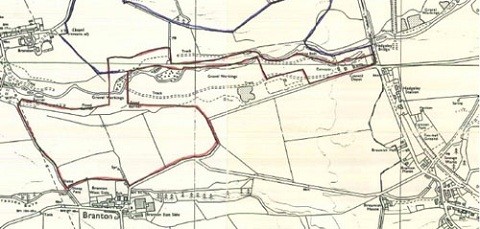
Planned extension is shown in red with the river flowing north of the area.
Sand and gravel extraction has taken place in the Breamish valley since the 1920s and began with the extraction of gravel from the river bed for road surfacing. The company extracted minerals from the land north of the river and restored the area back to agricultural land.
Originally permission for extraction was refused, primarily because it was deemed to be a sensitive location close to the National Park. This was overturned in 1993 on appeal on condition that the company restored the land to a nature conservation use.
The main aim of the restoration was to create an area that would complement and enhance the rural landscape. Extraction and restoration provided the opportunity of transforming a tract of unattractive, prairie-like, intensively managed farmland into an aquatic landscape to increase the landscape value of the valley, increase its biodiversity and provide a local amenity of very high wildlife value.
As extraction has taken place the site has been progressively restored and today the site provides a nature conservation area with two lakes and a local community facility for walking and observing wildlife and as an additional facility for visitors to the Breamish valley and National Park.
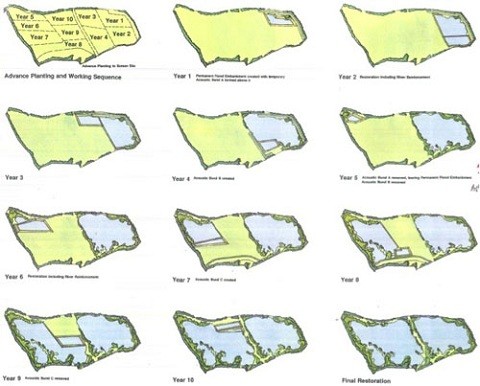
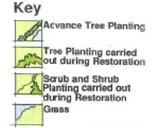
Wildlife haven
During the restoration, discussions were undertaken with experts from Northumberland County Council, Northumberland Wildlife Trust and the River Tweed Commissioner to ensure that the restoration would enhance the surrounding area
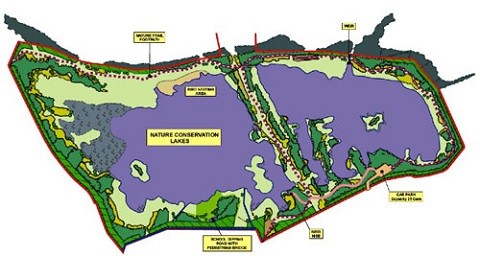
This included a desire by NCC to see to the restoration plan for the plant site, close to the quarry to be changed from woodland to grassland for grazing and shingle beds and scrapes to create a bird nesting areas and areas of standing water to provide a range of habitats close to the river.
The nature conservation site has been planted with a selection of native British species of trees, mainly broadleaved, and the sowing of a Ryegrass dominated mix, a rich grass mix, with 20% wildflower mix to encourage native flora and fauna species.
A number of habitats have been incorporated into the conservation area site to encourage wildlife - creation of nesting islands, lake margin woodland and reedbeds.
Today the restored site attracts a host of wildlife including some rare species.
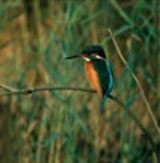 |
Kingfisher, Alcedo atthis. They are amber listed because of their unfavourable conservation status in Europe. |
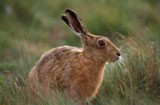 |
Brown hare, Lepus capensis is a UK BAP priority species having declined 80% in the last 10 years. |
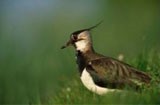 |
Lapwing Vanellus vanellus, adult, female. This familiar farmland bird has suffered significant declines recently and is now an Red List species. |
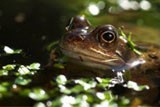 |
Common frog Rana temporaria, seen in the school's dipping pond |
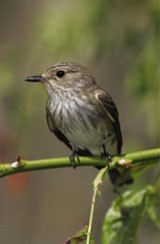 |
Spotted flycatcher Muscicapa striata, adult Recent dramatic population declines puts the spotted flycatcher high on the Red List. |
 |
Comma butterfly, Polygonia c-album. In the 19th century the British population of the Comma crashed, and by 1920 there were only two sightings. The cause for this decline is unknown, but from about 1930 the population recovered and it is now one of our more familiar butterflies. |
In total 55 species of birds, 14 of mammals, 5 of reptiles and amphibians, 21 of butterflies and moths and 7 of dragonflies and damselflies have been spotted on the site,
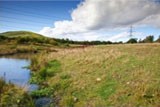 |
An additional benefit of the restoration scheme has been to provide some flood alleviation to Powburn village. The lakes provide additional capacity for excess surface water run-off and it has been estimated that flooding in Powburn and Branton will be reduced from once in 5 years to once in 10 years. |
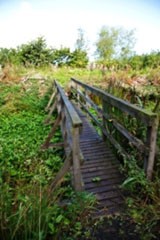 |
In an area adjoining the adjacent primary school, the Branton Community First School, a nature area has been created. Pupils have their own 'dipping pond' and nature reserve which is accessed by a bridge spanning the pond. Walkways are cut around the pond area so children can view the insects and birdlife. |
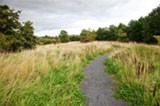 |
For the local community, a footpath has been created around part of the nature reserve. With selective access via the footpaths , it is intended that the wildlife will have secluded areas to live, breed and thrive. |
 |
A bird hide has been donated by Northumberland National Park Authority and frequently used by the North Northumberland Bird Group. Local enthusiasts monitor the type and number of breeds of bird that live and visit the site and to date 55 bird species have been seen on the site. |
The Branton Nature Conservation area and former plant site is covered by an aftercare management scheme for a period of five years . which will ensure that the restoration continues to be successful and sustainable. CEMEX has been active in carrying out the required aftercare commitments which are monitored by NCC until these are completed in 2014.
In addition CEMEX has entered into a legal agreement which requires the site to be managed in accordance with an approved conservation management plan. This plan has been approved by the NCC and requires the site to be managed for a period of 20 years once the five year aftercare period has been completed.
During this period it is hoped to be able to engage the community to take an active interest in the site. We would welcome you constructive views and suggestions to maintain the site for the enjoyment for future generations.
CEMEX will be looking to set up a small Conservation Advisory Group within the local community to help manage the site on a voluntary basis and would be pleased to talk to anyone who is interested in being involved with such a group.
For more information please contact us.

